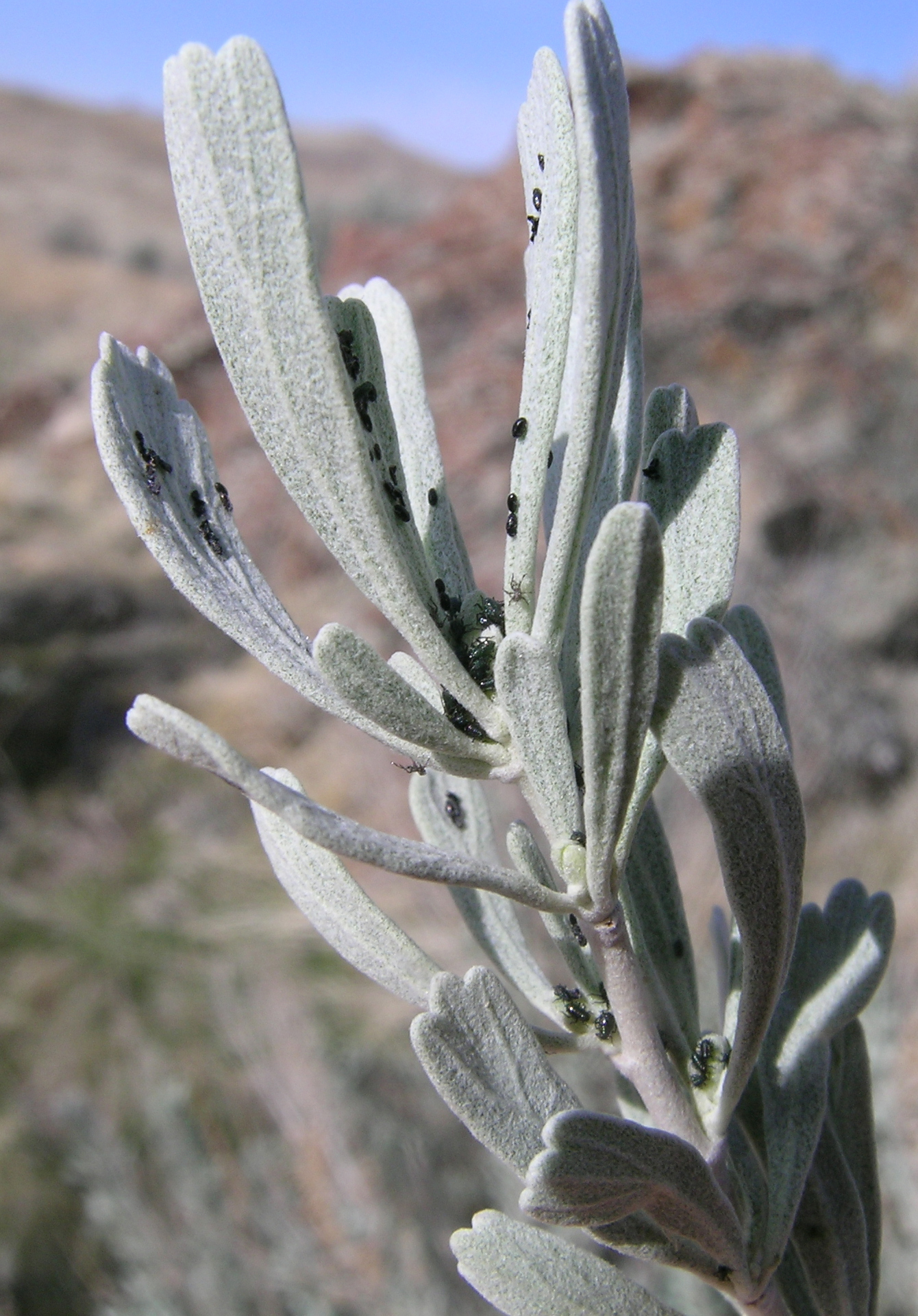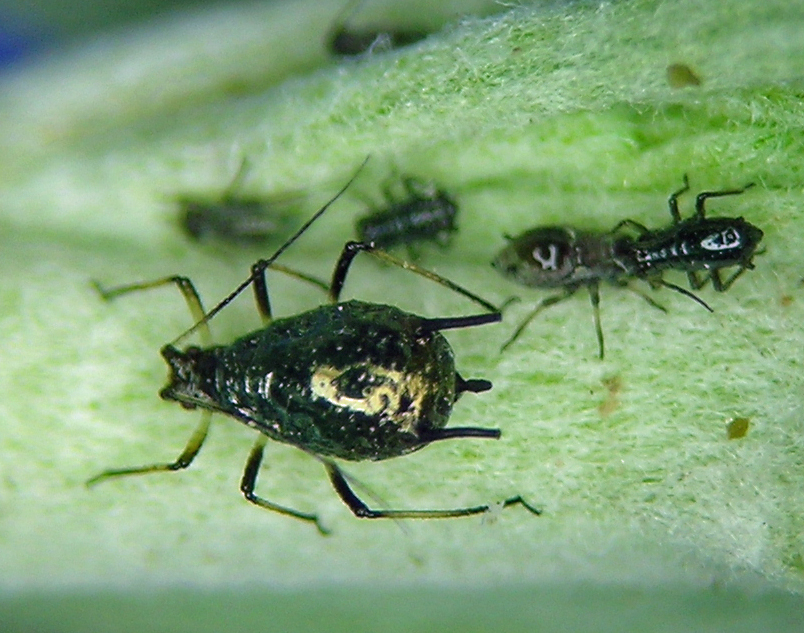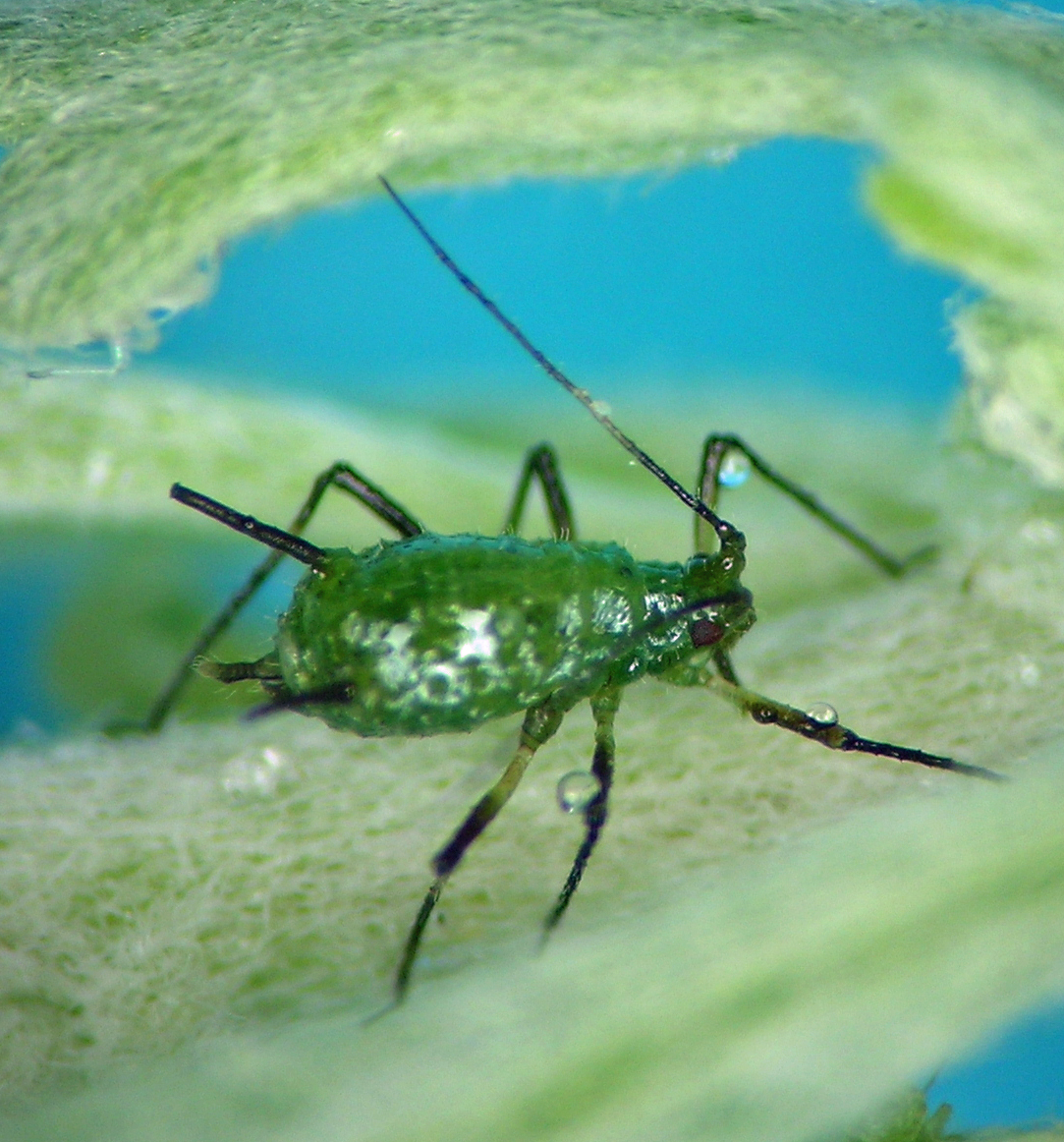Obtusicauda Soliman
This page updated: December 2024.
I really enjoy this genus, feeling like it is an old friend as I walk, camp, explore the sagebrush lands of the west. It is easy to find from the sandy deserts of Utah to the high mountain slopes of Idaho. This is another example of a group in which I think species-level taxonomy is so poorly understood that I rarely place a species name on specimens in my collection.
Obtusicauda is unusual for the aphids I study in that the oviparae lay eggs in massive groups at the ends of young shoots. Then the fundatrices hatch together and form dense gatherings in the spring. During the summer in the mountains Obtusicauda is a frequent migrant colonist — alate viviparae can be found on the edge of ‘spring’ all summer as the season crawls up the mountain slopes, the snow banks melt, etc. It seems obvious that a lot of the Obtusicauda at high elevations are colonizing from lower elevations. I cannot say whether it seems that such high elevation colonies then remigrate to the low lands in fall.
Since moving to western Colorado in 2021, I’ve been very curious if the groupings of Obtusicauda in my collection (i.e., my proposed species groups) would hold up to sorting a season’s worth of Colorado specimens. To my surprise, my previous groupings did fairly well, with one large set of specimens that I chose not to file with a previous group, but put all together. There were, as usual, a few slides of oddball specimens that do not clearly group with any others.
Several years ago I was thinking that there might be some host specificity to be discovered among these groups I think might be species. However, almost all my host specificity hypotheses seem not to hold up in the face of enough specimens from enough places. Especially interesting is the frequent occurrence of two apparent species together on the same individual shrubs. This is common in sagebrush aphids, but is still a puzzle, and makes me wonder about hybridization.
The deserts near our new Colorado home made for interesting observations during 2021. The previous few years had been very dry, with little in the way of summer monsoon moisture and almost no winter snow and rain in the valleys. The sagebrushes were under a lot of drought stress in May when we arrived. The desert is also interesting because of sagebrush taxa I was not familiar with: Artemisia bigelovii, Artemisia nova, and what seems to be Artemisia tridentata parishii. In spring and early summer Obtusicauda were nowhere to be found in our low elevation deserts. My hypothesis was that the desert species may be colonized in late summer and fall (from higher elevations where winter snow accumulates even during a drought) if monsoon rains came and the desert sagebrushes were able to grow. Monsoon rains were good in 2022 and sure enough, late summer and fall saw all the local “species” of Obtusicauda colonizing every kind of sagebrush, seemingly without host specificity.
The growing season of 2023 was even more interesting Obtusicauda-wise. Spring rains were very good, leading to strong sagebrush growth in our local pinon-juniper deserts. I focused my efforts on collecting this genus on Artemisia nova and Artemisia bigelovii when I could find aphids on both plant species in the same location. The results show that Obtusicauda on these two plants are very similar, sharing medium-pigmented coxae, mostly dark a.s. III, and medium-length siphunculi with only one or two setae very near the base. Interestingly, there seems to be consistently and recognizably more sensoria on a.s. III in specimens collected from A. begelovii than on A. nova. These may be different enough from samples collected on other species of sagebrush to be interesting, but unfortunately geography co-varies with host plant species, so conclusions are impossible.
In the end, I suggested to my future self another complete re-sort of all my Obtusicauda slides. This would be a big task, more appropriate for a graduate student. Anyone interested?



